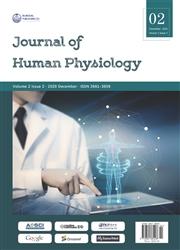Blood Pressure and Geometry of the Left Ventricle in Power Sports Athletes of Heavy Weight Categories
引用次数: 0
Abstract
To research blood pressure and heart geometry in power sports athletes of heavy weight categories. Material and methods 645 representatives of the power sports (weightlifting, powerlifting, bodybuilding) having sports qualification of CMS, MS, IMS with the average body weight of 102.7 ± 6.4kg were examined. Everything to the examined athletes along with survey carried out the standard electrocardiogram of rest, double measurement of the ABP, a transthoracic echocardiography. Results A survey of 645 athletes of power sports of heavy weight categories showed that 238 (37%) athletes have high blood pressure (systolic blood pressure-157.4 ± 5.6, diastolic blood pressure-91.2 ± 5.3) and violation of left ventricular geometry. Reliably in hypertensive athletes, compared with normotensive athletes, the following heart parameters were increased: TIS by 0.1mm (p<0.01), TPWLV by 0.2mm <0.01), DRV by 4.2mm (p<0.01), LVMM by 32.2g (p<0.01), LVMI by 17.8g/m2 (p<0.01), RWTLV by 0.08mm (p<0.01). And also in the group of hypertensive athletes there was a significantly lower EDD by 0.2mm (p<0.05). Conclusion Thus, the patterns obtained in relation to associations of blood pressure and disorders of heart geometry of athletes of power sports, heavy weight categories, it may be implemented in prevention programs in future with priority focus on the "risk-bearing" groups of men.重量级力量运动运动员左心室几何形态与血压的关系
研究重量级力量运动运动员的血压和心脏几何形状。材料与方法对645名平均体重为102.7±6.4kg,具有CMS、MS、IMS运动资格的力量类运动(举重、力量举重、健美)代表进行体格检查。对所有被检查的运动员进行标准的休息心电图,双测ABP,经胸超声心动图。结果对645名举重类力量运动运动员的调查显示,238名(37%)运动员存在高血压(收缩压157.4±5.6,舒张压91.2±5.3)和左心室几何形状违章。在高血压运动员中,与正常运动员相比,下列心脏参数增加:TIS增加0.1mm (p<0.01), TPWLV增加0.2mm <0.01), DRV增加4.2mm (p<0.01), LVMM增加32.2g (p<0.01), LVMI增加17.8g/m2 (p<0.01), RWTLV增加0.08mm (p<0.01)。高血压运动员组EDD明显降低0.2mm (p<0.05)。结论对力量类、体重类运动员血压与心脏几何功能障碍的关系规律进行研究,可在今后的预防规划中重点关注男性“风险承担”人群。
本文章由计算机程序翻译,如有差异,请以英文原文为准。
求助全文
约1分钟内获得全文
求助全文

 求助内容:
求助内容: 应助结果提醒方式:
应助结果提醒方式:


